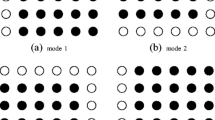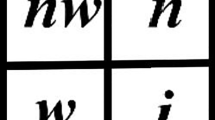Abstract
A novel lossless data hiding scheme based on a combination of prediction and the prediction-error adjustment (PEA) is presented in this paper. For one pixel, its four surrounding neighboring pixels are used to predict it and 1-bit watermark information is embedded into the prediction-error. In traditional approaches, for the purpose of controlling embedding distortion, only pixels with small prediction-errors are used for embedding. However, when the threshold is small, it is difficult to efficiently compress the location map which is used to identify embedding locations. Thus, PEA is introduced to make large prediction-error available for embedding while causing low embedding distortions, and accordingly, the location map can be compressed well. As a result, the hiding capacity is largely increased. A series of experiments are conducted to verify the effectiveness and advantages of the proposed approach.
Similar content being viewed by others
References
Honsinger C W, Jones P, Rabbani M, et al. Lossless Recovery of an Original Image Containing Embedded Data. US patent: 6278791. 2001
Macq B. Lossless multiresolution transform for image authenticating water-mark. In:Proceedings of EUSIPCO. Tampere: EUSIPCO, 2000. 533–536
Bender W, Gruhi D, Morimoto N. Techniques for data hiding. Syst J, 1996, 35: 313–336
de Vleeschouwer C, Delaigle J F, Macq B. Circular interpretation of histogram for reversible watermarking. IEEE Trans Multimedia, 2003, 5: 97–105
Fridrich J, Goljan M, Du R. Invertible authentication. In: SPIE Proceedings of Security and Watermarking of Multimedia Content. San Jose: SPIE, 2001. 3971: 197–208
Tian J. Reversible data embedding using a difference expansion. IEEE Trans Circ Syst Video Technol, 2003, 13: 890–896
Alattar A M. Reversible watermark using difference expansion of triplets. In: Proceedings of IEEE International Conference on Image Processing. Barcelona: IEEE, 2003. 501–504
Xuan G R, Yang C Y, Zhen Y Z. Reversible data hiding using integer wavelet transform and companding technique. In: Proceedings of International Workshop on Digital Watermarking. Korea: Springer, 2004
Celik M U, Sharma G, Tekalp A M. Lossless watermarking for image authentication a new framework and an implementation. IEEE Trans Image Process, 2006, 15: 1042–1049
Lee S, Yoo C D, Kalker T. Reversible image watermarking based on integer-to-integer wavelet transform. IEEE Trans Inform Forensics Secur, 2007, 2(3): 321–330
Coltuc D, Tremeau A. Simple reversible watermarking schemes. In: Proc SPIE, Security, Steganography, Watermarking of Multimedia Contents. San Jose: SPIE, 2005. (5681): 561–568
Coltuc D, Chassery J M. Very fast watermarking by reversible contrast mapping. IEEE Signal Process Lett, 2007, 14(4): 255–258
Thodi M, Rodrguez J J. Prediction-error based reversible watermarking. In: Proceedings of IEEE International Conference on Image Processing. Singapore: IEEE, 2004. 3: 1549–1552
Thodi D M, Rodrguez J J. Expansion embedding techniques for reversible watermarking. IEEE Trans Image Process, 2007, 16(3): 721–730
Barton J M. Method and Apparatus for Embedding Authentication Information within Data. US patent: 5646997. 1997
Author information
Authors and Affiliations
Corresponding author
Additional information
Supported by National Natural Science Foundation of China (Grant Nos. 60776794, 60702013 and 90604032), the Major State Basic Research Development Progrom of China (Grant No. 2006CB303104), the National High Technology Research and Development Program (Grant No. 2007AA01Z175), PCSIRT (Grant No. IRT0707) and Specialized Research Foundation of BJTU
Rights and permissions
About this article
Cite this article
Weng, S., Zhao, Y., Ni, R. et al. Lossless data hiding based on prediction-error adjustment. Sci. China Ser. F-Inf. Sci. 52, 269–275 (2009). https://doi.org/10.1007/s11432-009-0055-3
Received:
Accepted:
Published:
Issue Date:
DOI: https://doi.org/10.1007/s11432-009-0055-3




